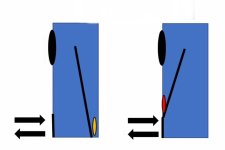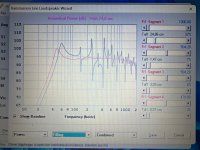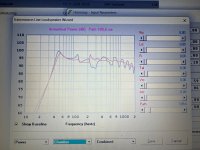They aren't different types -they're just different ways of folding, potentially with some vatiations for the driver & vent (where relevant) tap locations (offset) along the pipe / horn expansion. And there are plenty more than just that. Ideally, you design the pipe, then decide how to fold it, in such a way that it puts the driver & vent arrangements where you want them. There are or can be some other effects going on, but these are usually secondary to the basic pipe & tend to come in to more complex / advanced designs.
Last edited:
Yes. I thought maybe there are some (minor) differences because the left one is more close too the original Voigt pipe?They aren't different types -they're just different ways of folding.
Yes. I have to make a dummy cabinet and measure what it doesThe only way to find out what kind of sound is to actually create it and compare it by listening to it.
The top example is an interesting one. At the bottom there’s something interesting coming on to make the ‘pipe’ longer.These are different foldings of the same line.


The last actually is no fold.
dave
Okay. Hornresp shows that indeed.@Niek I think of the two drawings you posted there will be very little difference.
What’s that last part you mention? ZdThe only really noticable change is that Zd.
Driver offset / tap location.
As noted, they are just different methods of folding. Unless you are deliberately trying to use secondary effects & account for them in the design, you design your pipe, then decide how to fold it up in such a way as to put the driver and vent where you want them. Or, if you want a rectilinear cabinet, check first to see whether a simple MLTL will do the job as well or better. 😉
As noted, they are just different methods of folding. Unless you are deliberately trying to use secondary effects & account for them in the design, you design your pipe, then decide how to fold it up in such a way as to put the driver and vent where you want them. Or, if you want a rectilinear cabinet, check first to see whether a simple MLTL will do the job as well or better. 😉
I think MLTL is very good construction.
Why make it harder than it needs to be?
The result speaks for itself.
Why make it harder than it needs to be?
The result speaks for itself.
Last edited by a moderator:
yes, but that’s a bit unclear too me because I never used Hornresp befor, and build a TQWT 😉As noted, they are just different methods of folding. Unless you are deliberately trying to use secondary effects & account for them in the design, you design your pipe, then decide how to fold it up in such a way as to put the driver and vent where you want them.
Here i have two examples of folding the pipe like the example (left/right)
At one example (OD1. Driver between section 2-3) you see a better response around 100-200Hz.
You see a response in a 1.0 x Pi configuration. The peak around 50Hz is because I want less energy from 60-100Hz because of roommodes. I have peaks around 63/71/92Hz.
Attachments
Well, my first question would be: is the basic pipe geometry the same? By that, 'we' (well, I, anyway) mean, and ignoring folds etc., which are primarily a construction, not acoustic issue:
Hope that helps a bit!
- Is length equal?
- Is the throat area (the pointy bit 😉 ) of equal cross section?
- Is the terminus area (the wide bit?) of equal cross section?
- Is any mass-loading vent (the exit area or pipe of resticted size compared to the terminus area) of equal area and length?
- Is the driver offset (distance from the throat) equal?
- If a mass-loading vent is present, is it offset from the terminus, and if so, is the offset equal?
- Is the damping of identical type, and identically positioned?
Hope that helps a bit!
In short: Yes. I changed OD-OD1. L12 is a few cm longer. (And Path length of course)is the basic pipe geometry the same?
No major changes I think 🤷🏻♂️
- Home
- Loudspeakers
- Full Range
- Which TQWT model?


